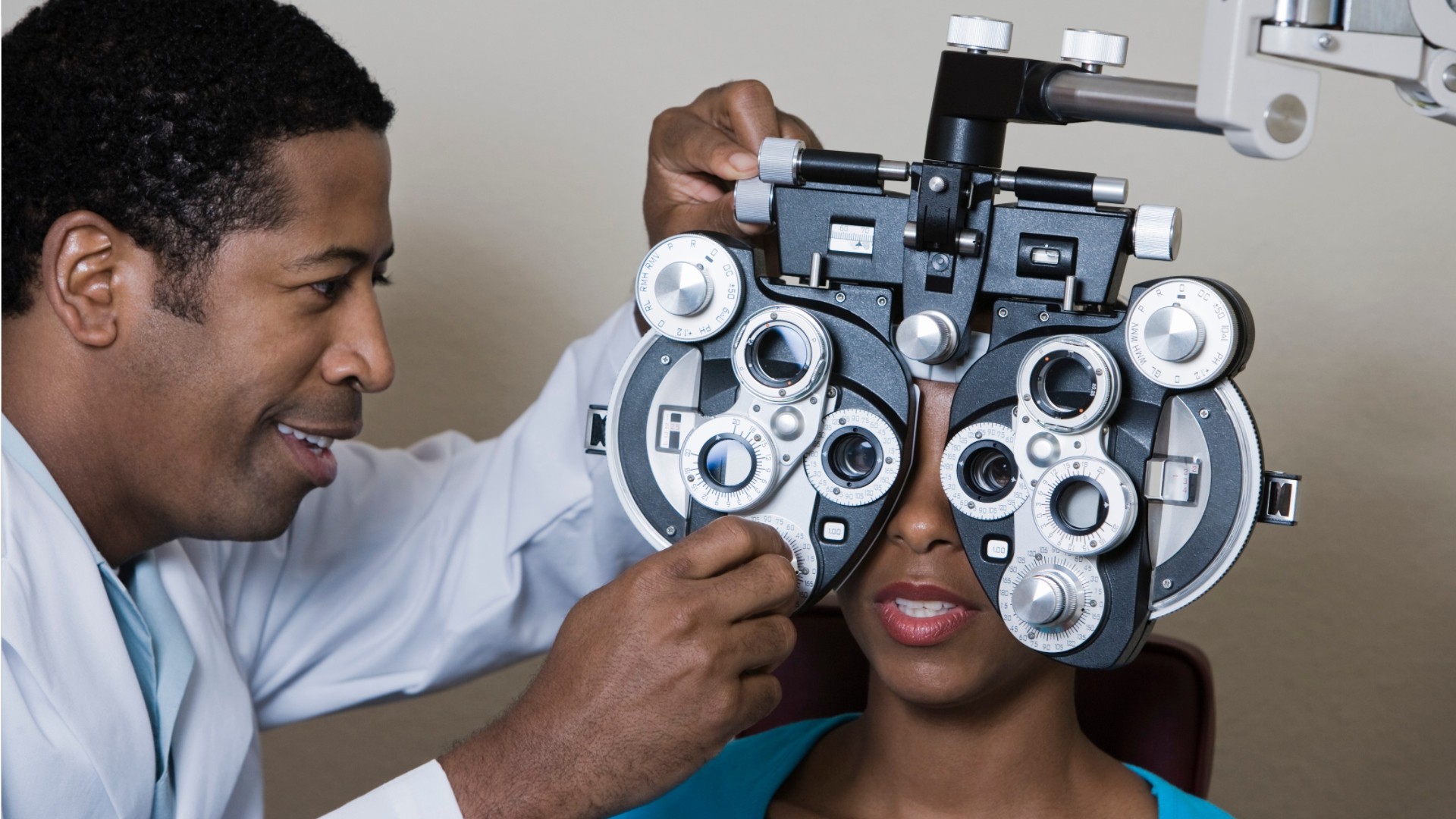Exploring the Most Recent Technical Developments in Optometry and What They Mean for Eye Doctors
In the ever-evolving area of optometry, recent technical advancements are improving how experts approach eye treatment. From the precision of Optical Comprehensibility Tomography to the nuanced insights used by AI-driven diagnostic tools, these innovations are setting new criteria in person assessment and therapy. Teleoptometry is poised to redefine availability, ensuring that proficiency goes beyond geographical constraints. As these developments penetrate the method, optometrists are confronted with the challenge of welcoming these tools to improve person outcomes. Yet, the inquiry remains: exactly how will these technical shifts redefine the roles and obligations within the career?
Innovations in Diagnostic Tools
Advancing the field of optometry, developments in diagnostic tools have reinvented the means eye care professionals analyze and detect ocular conditions and visual impairments. The past years has actually experienced substantial technical innovations, enabling even more detailed and precise assessments. Optical Coherence Tomography (OCT), as an example, provides high-resolution cross-sectional photos of the retina, permitting for the very early detection of diseases such as glaucoma and age-related macular deterioration. This non-invasive imaging strategy has become essential in contemporary optometric technique.
An additional key technology is the introduction of innovative corneal topography systems, which map the surface curvature of the cornea with accuracy. These devices are especially beneficial for fitting call lenses and diagnosing corneal conditions. Digital retinal imaging has changed typical ophthalmoscopy, offering comprehensive, scenic sights of the retina that facilitate comprehensive visual assessments.
The growth of wavefront aberrometry has actually additionally been crucial, enabling the analysis of refractive errors with unmatched accuracy (Eye Doctor). This innovation helps in personalizing restorative lenses and improving surgical results for refractive surgical treatments. Collectively, these diagnostic developments empower optometrists to deliver superior patient care, ensuring very early treatment and tailored therapy strategies, ultimately improving visual wellness end results
AI in Person Administration
Building on the structure of innovative diagnostic tools, the incorporation of artificial knowledge (AI) in individual administration represents a transformative jump for optometry. AI systems are significantly utilized to enhance performance, precision, and personalization in patient treatment. By examining large quantities of information, AI can determine patterns and predict possible ocular problems, allowing eye doctors to customize interventions a lot more successfully. This capability is critical in handling chronic eye conditions such as glaucoma and diabetic retinopathy, where very early detection and continual monitoring are vital.
Moreover, AI-driven platforms promote streamlined individual interactions and administrative procedures. Automated scheduling, digital consultations, and customized follow-up strategies not only enhance person fulfillment yet also enhance time monitoring for practitioners. These systems can triage individuals based upon the necessity of their conditions, guaranteeing that those in essential need get timely focus.
Furthermore, AI improves decision-making by supplying eye doctors with evidence-based referrals and therapy pathways. By integrating data from electronic health and wellness documents, AI devices supply understandings that educate clinical decisions, reducing the risk of errors and improving client results. As AI proceeds to progress, its function in individual administration will likely broaden, improving the landscape of optometric care.
Developments in Retinal Imaging
In the world of optometry, retinal imaging has actually seen exceptional technological developments that are enhancing diagnostic abilities and person treatment. Technologies such as Optical Comprehensibility Tomography (OCT) and fundus digital photography have revolutionized how optometrists visualize and assess the retina. OCT, specifically, gives high-resolution, cross-sectional photos of the retina, enabling the detailed examination of its layers. This capacity is vital for very early detection and monitoring of problems like glaucoma, diabetic retinopathy, and age-related macular deterioration.
Enhanced imaging methods like OCT angiography are further refining analysis accuracy. Eye Doctor. Such innovations facilitate the identification of min retinal adjustments that could represent redirected here condition progression.
Moreover, innovations in synthetic knowledge are increasing retinal imaging by making it possible for automated analysis of big datasets. These systems help eye doctors in recognizing patterns a measure of pathology, thereby enhancing diagnostic accuracy and effectiveness. Collectively, these advancements are changing retinal imaging right into a foundation of modern-day eye treatment, boosting end results and increasing healing opportunities.
Teleoptometry's Growing Role
Teleoptometry is increasingly coming to be a crucial element of eye treatment, driven by improvements in digital interaction and diagnostic tools. This is specifically helpful in underserved and country locations where access to specialized eye treatment is typically limited.
The assimilation of expert system (AI) additional enhances teleoptometry, making it possible for the analysis of aesthetic data and assisting in the detection of eye conditions such as glaucoma and diabetic person retinopathy. AI-powered algorithms can swiftly translate intricate imaging data, giving optometrists with valuable understandings that bolster professional decision-making.
Furthermore, teleoptometry sustains connection of care with seamless integration with digital health records (EHRs), permitting optometrists to preserve comprehensive individual backgrounds. When seeking advice from with various professionals., this ensures that clients obtain regular and customized treatment also.
Despite these advantages, difficulties continue to be, consisting of ensuring data safety and taking care of person expectations. Nevertheless, teleoptometry represents a considerable stride in the direction of even more obtainable, reliable, and patient-centered eye treatment. As technology develops, its role is poised to expand even more.

Future Trends in Eye Care
A myriad of innovative patterns is set to reshape the future of eye care, driven by technical developments and the developing requirements of clients. One considerable trend is the integration of expert system (AI) in diagnostics, which assures to improve the precision and effectiveness of eye evaluations. AI algorithms can analyze substantial quantities of data from retinal images, possibly identifying problems like diabetic retinopathy and glaucoma earlier than typical approaches.
Additionally, customized medicine is getting traction in optometry, with hereditary testing informing tailored treatment strategies. This technique aims to maximize individual outcomes by customizing interventions to specific hereditary profiles. Wearable modern technology, such as wise contact lenses, is additionally coming up, offering real-time surveillance of intraocular pressure or sugar levels, therefore providing continual insights right into ocular and systemic health.
The fostering of augmented truth (AR) and virtual truth (VIRTUAL REALITY) in training and individual education is one more emerging fad. These technologies provide immersive experiences that can improve understanding and skills both for eye doctors and people. As these trends advance, optometrists should remain abreast of technological improvements to provide cutting-edge treatment, guaranteeing better patient results and complete satisfaction in the vibrant moved here landscape of eye treatment.
Conclusion

Collectively, these diagnostic developments empower eye doctors to provide exceptional patient treatment, guaranteeing early treatment and tailored therapy methods, ultimately boosting visual health end results.

As these innovations proceed to evolve, optometrists need to adjust and incorporate go now them into technique, eventually maximizing operations efficiency and boosting the requirement of eye treatment supplied to clients.